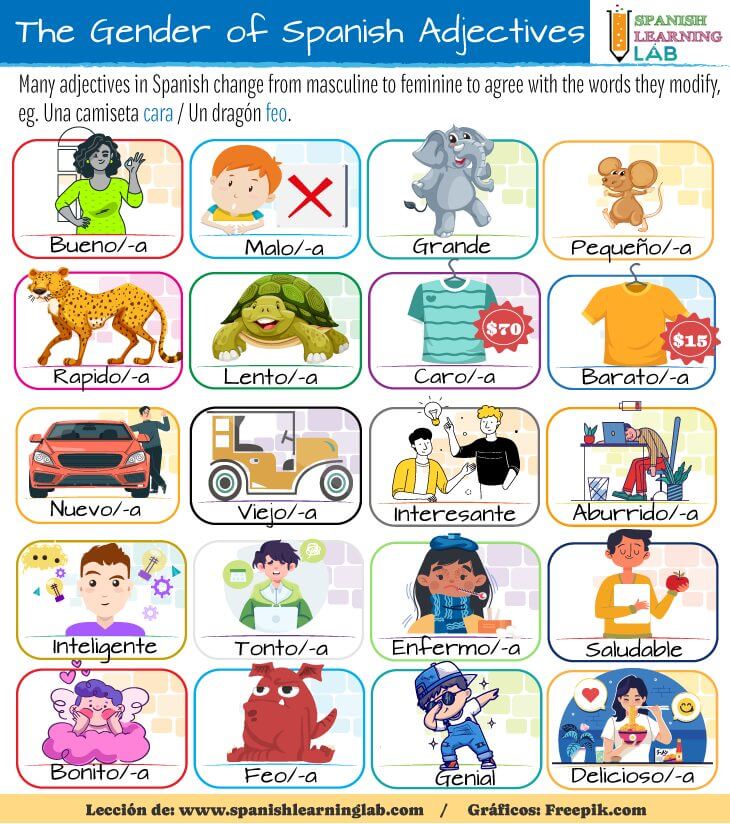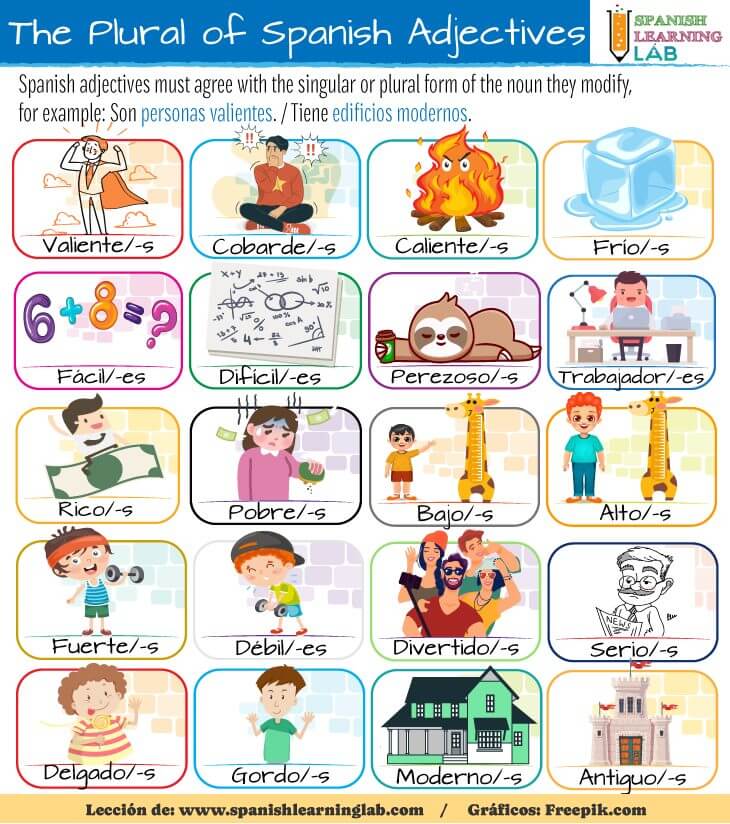
In the previous lesson, we explained the rules for adjective placement and talked about the rules to place these words, either before or after nouns. In this lesson, we will learn about another important feature called “concordancia del adjetivo y el sustantivo”, that is Spanish noun-adjective agreement. Do not worry, it will be easier than it sounds, though you will understand everything way faster if you already know the basics about noun gender and the plural form of nouns. Let’s start…
We will begin this lesson with a video explaining the basic rules to use Spanish adjectives. This video was recording in Spanish, but you can also activate the captions (cc) below or check the script. It includes some examples and notes that will be very helpful to understand more about the way adjectives work in the language.

Know that i t is possible to make some masculine adjectives feminine in Spanish by adding -A at the end when the word ends in a consonant, but not in all cases, e.g. “Trabajador/Trabajadora” (correct) and “Popular/Populara” (incorrect). Most nationalities do suffer gender changes too, including some that end in consonants like “español->española”. Read and listen to these sample sentences:
Marcos compró una casa nueva. Es muy hermosa y espaciosa. Marcos bought a new house. It is very beautiful and spacious. María es la chica alta que está sentada en el sofá verde. Maria is the tall girl sitting on the green sofa. La ciudad que visitamos tenía una arquitectura única y famosa. The city we visited had some unique and famous architecture.Some adjectives are used for both genders despite their ending, especially those that end in -E or in consonants, for example: “un libro interesante”, “un examen fácil”, “un chico optimista/una chica optimista”.
Amable (kind), Difícil (difficult), Fácil (easy), Flexible, Paciente (patient), Verde (green).
Most numbers (except for the number one) will stay the same for masculine or feminine nouns, so you could say “Cuatro perros” or “Cuatro casas” and that would be totally correct. However, the number “UNO” will change to UN when used before a masculine noun as in “Un gato“, and to “UNA” before a feminine noun as in “Una amiga”. In this scenerario, UN/UNA would be used as indefinite articles.
Ella tiene una casa grande / El telescopio es grande. She has a big house / The telescope is big. La casa azul es la más antigua. / Usaremos ese líquido azul. The blue house is the oldest. / We’ll use that blue liquid.. Ella encontró cuatro perlas. / Él ha finalizado cuatro proyectos. She found four pearls. / He has completed four projectsAs we mentioned above, Spanish adjectives normally have a singular and a plural form. The rules are exactly the same used to form the plural of nouns. To illustrate this, read these two sentences carefully:
In these two examples, our goal was to make the noun “modelo” agree with the Spanish adjective “hermoso”, but since “Modelo” is always used in masculine form, the subject “Ella” or “Ellas” tell us we need a feminine adjective. As for the plural form, the subject of the sentence tells us if we are talking about one or many objects, and that help us decide if we must use a singular or plural adjective too. Notice that all the words, including the verb SER, will change so that there is actual noun-adjective agreement in Spanish and to have a fully functional sentence.
Pay attention to the following group of common adjectives in Spanish and how we could form their plural in the language.

Here is a last group of sample sentences showing how we must make adjectives agree with nouns in Spanish so that our sentences are functional and truly express our thoughts: